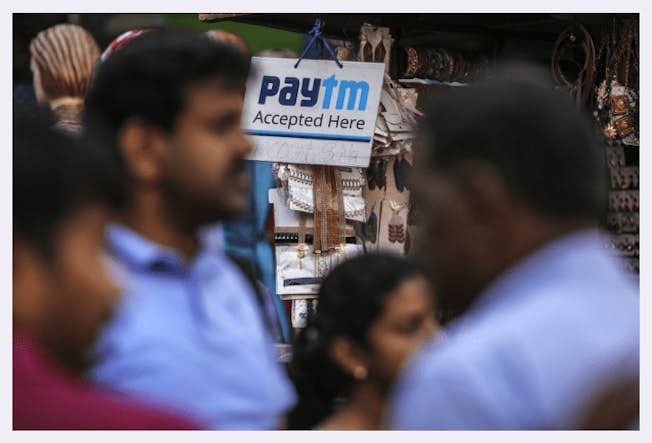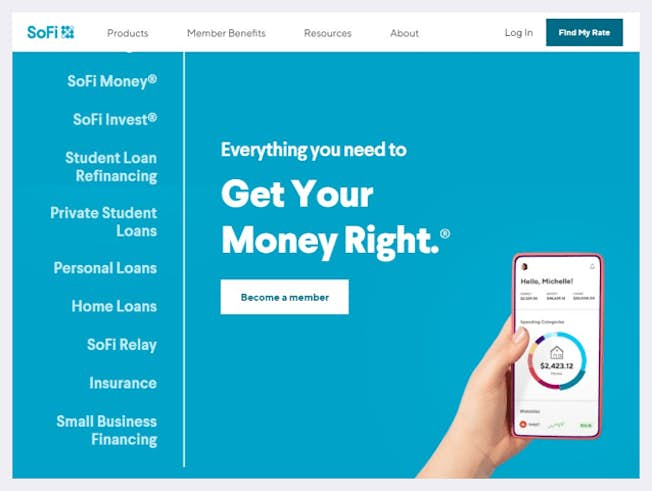Barely 20 years ago, the thought of using a mobile app for your finances was little more than a pipedream. Now, investments in FinTech (financial technology) are estimated to surpass $30 billion in 2020 alone. Digital banking industry trends have brought immense growth opportunities to the financial sector and created radical disruption in the interim.
While that causes uncertainty for traditional banking, one thing that’s sure is that FinTech is here to stay. The FinTech adoption rate by consumers increased from 16% in 2015 to 64% in 2019.
Companies need to understand the importance of implementing digital finance solutions to improve efficiency, service, and, ultimately, profitability. In this article, we'll explore the crucial FinTech trends that are set to change the face of finance forever.
1. Engaging Underserved Markets
The World Bank has estimated there to be over 1.7 billion people in the world right now who aren’t part of the formal financial system.
According to the same report, most of these people (60%) simply don’t have enough money for a bank account. Countries like Brazil, Peru, Colombia, and, especially, India are prime examples of these untapped markets.
According to reports from The Paypers, while 20% of India’s population remains unbanked, the country has embraced FinTech in recent years, with the emerging sector surging toward a $31 billion valuation in 2020. With a population of over 1.3 billion, it’s little surprise that outside investment is pouring into India. TechCrunch reports that the country has more than 100 million microfinance accounts, and a leading startup, Paytm, has over 300 million mobile wallet accounts.
The benefit for a startup entering a developing market is that it can operate with almost no competition and secure funding from investors to rapidly capture market share. Being the first service in a region could enable a new FinTech startup to quickly position itself as the preferred brand in the country.
After buying out the insurance firm, Raheja QBE, Paytm’s President, Amit Nayyar, explained that the company is “on a mission to drive the financial inclusion of over 500 million Indians, and our acquisition of Raheja QBE is a significant step towards this goal.”

2. Blockchain and Cryptocurrency Will Grow
Blockchain is one of the FinTech trends that has already put strong pressure on traditional interbank systems. The ability to participate in peer-to-peer transactions across borders means that legacy platforms will soon be endangered.
There are several benefits to adopting this decentralized technology. To name a few:
- Lower fees
- Faster services
- Greater transparency
- Capture new markets
- Better security
- Legal and regulatory compliance
Payment giants Visa and Mastercard are creating initiatives to incorporate blockchain and cryptocurrency into their payment platforms. Visa is already working with regulators for a compliance framework to ensure wider adoption.
The Lithuanian startup, Bankera aims to integrate traditional and crypto economies into a single platform. With a key focus on speed, accessibility, and cost-effectiveness, Bankera is trying to establish itself as a blockchain-friendly bank, offering financial services like crypto-backed loans to companies and individuals around the globe.
3. Big Data
Most companies are sitting on a mountain of data. If left untouched, they could risk losing out on the valuable insights this data can offer.
Big data involves taking all of this data — in both structured and unstructured forms — and applying advanced analysis via computer algorithms.
Companies can leverage this technology in various ways, such as:
- Customer Segmentation - You can divide your user base by age, location, gender, health, behavioral patterns, and more. If the data is there, you can analyze it and extract key insights to increase profitability.
- Fraud Detection - Security has become a primary concern for consumers. Therefore it is one of the more important banking industry trends to respect. With larger data sets, you can examine behaviors on a macro level. That way, it is easier to detect fraud and protect your customers.
- Risk Management - Big data allows you to better assess the risk of lending to specific entities. With enough data, trends will always emerge that you didn't realize before.
What does using big data mean for your business? Namely, you can create safe, customized offerings and infrastructure for your B2B and B2C clients alike. That way, you can be sure key stakeholders understand the actual value of such an investment before balking at the price tag.
Canadian fintech company, Quandl, provides financial data to thousands of investment professionals. Some of the leading investment banks and hedge funds in the world use Quandl to gain valuable insights that they couldn’t access anywhere else. For example, investors in an exploratory oil rig project purchased Quandl’s data to discover the project was going to fail. With the insights, the investors made trade decisions before the project failure was publicly announced.
4. Robotic Process Automation (RPA)
RPA is a technology application that automates business processes, such as email responses or deploying chatbots. RPA is akin to a software robot, in that companies have a 24-hour digital worker that doesn’t make mistakes. They will only do what they are programmed to do.
This field of technology will have an impact on the financial sector far into the future as you can use an RPA to save time by automating a number of business processes. For instance, you can code it to manipulate applications to emulate how a human being uses an app. Doing this can help with error testing before launching your digital products to consumers.
Florida startup, ViVi, uses RPA in the guise of a customer service chatbot called ViVian. The bot automates customer service processes, walking clients through various banking service options. Best of all, through machine learning, ViVian will listen to human-to-human customer service calls to learn and improve its service for future calls.
5. Artificial Intelligence (AI)
Having an omni-channel presence is a powerful asset in the modern tech era. And AI is the missing piece that brings it all together. Gartner estimates that by 2024, 75% of financial companies will have fully implemented AI solutions, making it easy for them to glean vital information from their customers on an unprecedented scale.
The result will be the ability to bring more customized services to your clientele, fueled by faster, more in-depth analysis that only a machine can perform.
Bank of America uses an AI-driven software called Erica, which acts as a digital financial assistant for the bank’s customer base. The bot uses natural language processing (NLP) to determine the intent of user search queries - which helps employees go beyond simple transactional data searches - to understand customer spending habits, credit risks, and more.
6. Mobile Payments
According to Forbes, registrations for mobile apps increased by 71% in 2019 alone. The same article shows that some companies have seen an 85% increase in the time spent on their finance apps between Q4 2019 and Q1 2020.
This shift is because global consumers don’t rely on physical cash as much as they used to. Instead, they prefer the instant, transparent, convenient nature of mobile payments.
Leaders in the payments space include Stripe, Apple, Alibaba, Venmo, Cash App, Tencent, and Google. Even Uber, a ride-sharing app, is getting into the game. When these companies pay attention to mobile banking trends, it means you should too.
Stripe simplified the payment processing space with an API that seamlessly integrates in the back-end of many business websites. Now, the company is worth over $36 billion, and continues to grow in the age of mobile commerce.
By offering easy-to-use mobile payment services, you can increase your market capitalization. Also, consumers have been conditioned to expect a few business days between requesting withdrawals from their digital wallets into their bank accounts.
This provides you with the chance to earn interest on those consumers’ funds in the interim.
7. Neobanking

Perhaps it’s due to the way Millennials and Generation Z’s digital citizens were raised with technology, but face-to-face banking (or something as traditional as a checkbook) is not as common as it used to be. Digital-only banking — or neobanking — is the way of the future.
Financial businesses should welcome this, due to the lower cost, speed of service, and broader market access it affords. Much of the overhead costs of running a financial service will disappear.
Two of the biggest challenger banks in Europe are N26 and Revolut, which both secured Series D funding in 2020 to bring their valuation to $3.2 billion and $5 billion, respectively. Aside from their intuitive, user-friendly mobile app experiences, these digital alternatives to traditional banks offer low-cost international transfers, zero monthly fees, and secondary accounts for a child or partner.
Goodly is an up-and-coming startup in this space that helps employers retain great talent by assisting graduates with their student loan debt. And Divvy is another one to watch, using digitalization to help renters become homeowners.
Predictions Going Forward
Now that you know the most important financial technology trends, you need to keep an eye on the future. That way, you can position your company to get the most out of this evolving technology and adapt to consumer demands.
Here are some predictions about the years ahead:
Public Health Will Increase Digitalization
During 2020, COVID-19 has proved to be a global phenomenon that has changed public behavior and interaction. Digital banking is already estimated to generate upwards of $8.6 billion in revenue by 2025.
The products and services that both consumers and institutions thought they needed to conduct in person are now being done - magically and easily - online. One example is how so many retail operations have switched to contactless payments, to comply with hygiene and social distancing requirements.
For this reason, you should expect an even greater increase in the rise of FinTech. Be prepared to digitize your processes, marketing, transaction portals, and sales methods. If you don’t, you may not weather the next lockdown — and it is prudent to assume that there will be another.
Buyouts Galore
Tech and finance giants are buying up competitors and complementary companies that embrace FinTech solutions. If the likes of Google, Apple, Facebook, and Alibaba are more interested in this space, it could be an excellent opportunity. Consider your business model and exit strategy. Growing your company with the intention of selling could be a viable option now more than ever.
Disruption from Personal Finance Startups

Consumer behavior is always changing. Therefore, banks that remain dinosaurs will lose ground to up-and-coming companies like Revolut and N26 with a fresh new twist. Providing online services is something that technology startups thrive upon.
SoFi is one of the top FinTech apps to watch. This rapidly growing startup focuses on providing innovative financial services to various markets: students, homeowners, investors, and more.
SoFi provides cash management without any fees, and believe that consumers should be able to do four primary things with their money:
- Have a good plan to attack their debt
- Have a safety net
- Put their money to work for them instead of laying around.
- Save up for life goals and retirement.
By assuming the role of a financial mentor to their market, they can create products and services that have disrupted many big players in the financial industry.
Leveraging AI and Big Data, the SoFi FinTech philosophy respects the fact that customer behaviors require new ways of thinking. SoFi implements a strategy that is in line with the trends mentioned above. It approaches new markets and embraces the FinTech revolution to cut costs, provide better service, and supercharge profitability.
Keep in Touch with Trends to Stay Competitive
Digitalization in banking is still in its infancy but it has undergone rapid evolution in the last few years, and especially during 2020. All signs point to more disruption, and with that, more opportunities.
Whether your company excels or sinks in the rapidly-evolving financial sector will depend on your ability to adapt and implement new strategies sooner rather than later. As some traditional financial institutions like Bank of America embrace new technologies, the stage for greater cooperation between banks and FinTech startups arises.
Consider the FinTech trends above and how they will impact your customer base and your current model. If you're up to date on the emerging trends in financial services, that will give you the best chance of developing a business built for the new age of banking and finance.
Related
Upgrade to Power Membership to continue
your access to thousands of articles, toolkits, podcasts, lessons and much much more.
Become a Power Member- Login
- View Courses
- - - -
- Courses
- Resources
- - - -
- My Account
- Change Password
- Logout





